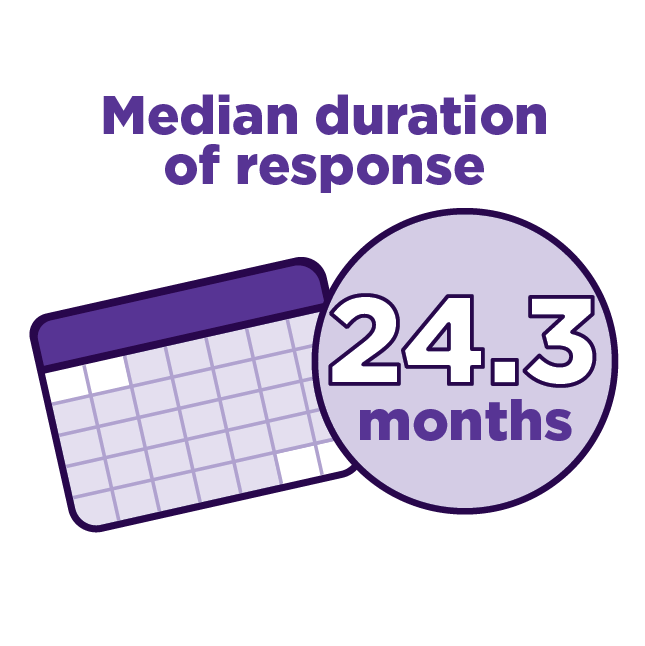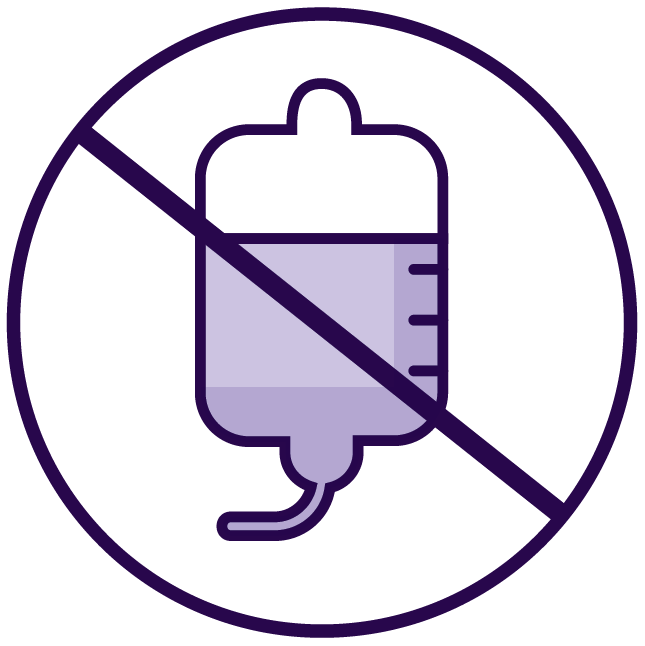Approved Uses and Important Safety Information
Approved Uses for PROMACTA® (eltrombopag)
PROMACTA is a prescription medicine used to treat people with severe aplastic anemia (SAA) in combination with standard immunosuppressive therapy as the first treatment for adults and children 2 years of age and older. PROMACTA is also used to treat your SAA when other medicines have not worked well enough.
PROMACTA is not used to make platelet counts normal.
PROMACTA is for treatment of certain people with low platelet counts caused by persistent or chronic immune thrombocytopenia (ITP), chronic hepatitis C virus (HCV), or SAA, not for a precancerous condition called myelodysplastic syndromes (MDS) or low platelet counts caused by other conditions or diseases.
It is not known if PROMACTA is safe and effective in children with chronic HCV or previously treated SAA, in children younger than 1 year with ITP, or children younger than 2 years when used in combination with standard immunosuppressive therapy as the first treatment for SAA.
Important Safety Information for PROMACTA® (eltrombopag)
What is the most important information I should know about PROMACTA?
PROMACTA can cause serious side effects, including:
Liver problems.
PROMACTA may increase your risk of liver problems that may be severe and possibly life-threatening. Your health care provider will do blood tests to check your liver function before you start taking PROMACTA and during treatment. Your health care provider may stop your treatment with PROMACTA if you have changes in your liver function blood tests.
Tell your health care provider right away if you have any of these signs and symptoms of liver problems:
- yellowing of the skin or the whites of the eyes (jaundice)
- unusual darkening of the urine
- unusual tiredness
- right upper stomach area (abdomen) pain
- confusion
- swelling of the stomach area (abdomen)
What are the possible side effects of PROMACTA?
PROMACTA may cause serious side effects, including:
- Worsening of a precancerous blood condition to a blood cancer called acute myelogenous leukemia (AML). PROMACTA is not for treatment of people with a precancerous condition called myelodysplastic syndromes (MDS). If you have MDS and receive PROMACTA, your MDS condition may worsen and become AML. If MDS worsens to become AML, you may die sooner from AML
- High platelet counts and higher risk for blood clots. Your risk of getting a blood clot is increased if your platelet count is too high during treatment with PROMACTA. Your risk of getting a blood clot may also be increased during treatment with PROMACTA if you have normal or low platelet counts. You may have severe problems or die from some forms of blood clots, such as clots that travel to the lungs or that cause heart attacks or strokes. Your health care provider will check your blood platelet counts and change your dose or stop PROMACTA if your platelet counts get too high. Tell your health care provider right away if you have signs and symptoms of a blood clot in the leg such as swelling, pain, or tenderness.
People with chronic liver disease may be at risk for a type of blood clot in the stomach area. Tell your health care provider right away if you have stomach area pain that may be a symptom of this type of blood clot
- New or worsened cataracts (a clouding of the lens in the eye). New or worsened cataracts have happened in people taking PROMACTA. Your health care provider will check your eyes before and during your treatment with PROMACTA. Tell your health care provider about any changes in your eyesight while taking PROMACTA
What should I tell my health care provider before taking PROMACTA?
Before you take PROMACTA, tell your health care provider about all of your medical conditions, including if you:
- have liver problems
- have a precancerous condition called MDS or a blood cancer
- have or have had a blood clot
- have a history of cataracts
- have had surgery to remove your spleen (splenectomy)
- have bleeding problems
- are of Asian ancestry (such as Chinese, Japanese, Taiwanese, or Korean). You may need a lower dose of PROMACTA
- are pregnant or plan to become pregnant. It is not known if PROMACTA will harm an unborn baby. Tell your health care provider if you become pregnant or think you may be pregnant during treatment with PROMACTA. If you are a woman who is able to become pregnant, you must use reliable birth control (contraception) while taking PROMACTA and for at least 7 days after you stop taking PROMACTA. Talk to your health care provider about options of effective birth control methods that may be right for you during this time
- are breastfeeding or plan to breastfeed. You should not breastfeed during treatment with PROMACTA. Talk to your health care provider about the best way to feed your baby during this time
Tell your health care provider about all the medicines you take, including prescription and over-the-counter medicines, vitamins, and herbal supplements. PROMACTA may affect the way certain medicines work. Certain other medicines may affect the way PROMACTA works.
Especially tell your health care provider if you take:
- certain medicines used to treat high cholesterol, called “statins”
- a blood thinner medicine
Certain medicines may keep PROMACTA from working correctly. Take PROMACTA at least 2 hours before or 4 hours after taking these products:
- antacids used to treat stomach ulcers or heartburn
- multivitamins, mineral supplements, or products that contain iron, calcium, aluminum, magnesium, selenium, and zinc
Ask your health care provider if you are not sure if your medicine is one that is listed above.
Know the medicines you take. Keep a list of them and show it to your health care provider and pharmacist when you get a new medicine.
What should I avoid while taking PROMACTA?
Avoid situations and medicines that may increase your risk of bleeding.
The most common side effects associated with PROMACTA when used in combination with standard immunosuppressive therapy to treat severe aplastic anemia (SAA) reported more frequently than in patients with SAA when other medicines to treat SAA have not worked well enough are:
- abnormal liver function tests
- rash
- skin discoloration including darkening of skin patches (hyperpigmentation)
The most common side effects when PROMACTA is used to treat SAA when other medicines to treat SAA have not worked well enough are:
- nausea
- feeling tired
- cough
- diarrhea
- headache
Laboratory tests may show abnormal changes to the cells in your bone marrow.
Tell your health care provider about any bruising or bleeding that happens while you take or after you stop taking PROMACTA.
Tell your health care provider if you have any side effect that bothers you or does not go away.
You are encouraged to report negative side effects of prescription drugs to the FDA. Visit www.fda.gov/medwatch, or call 1-800-FDA-1088.
Please see full Prescribing Information, including Boxed WARNING, and Medication Guide.







